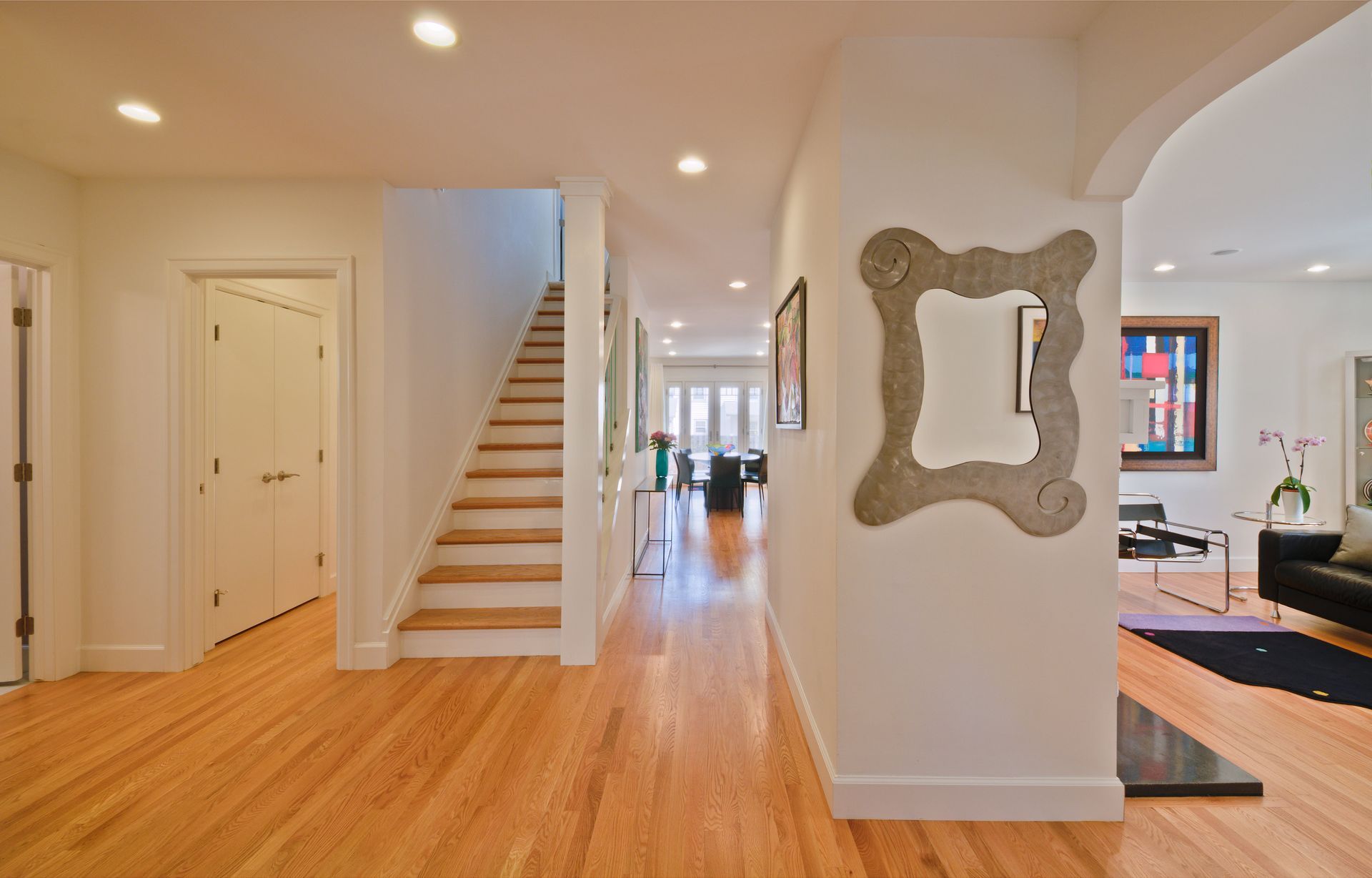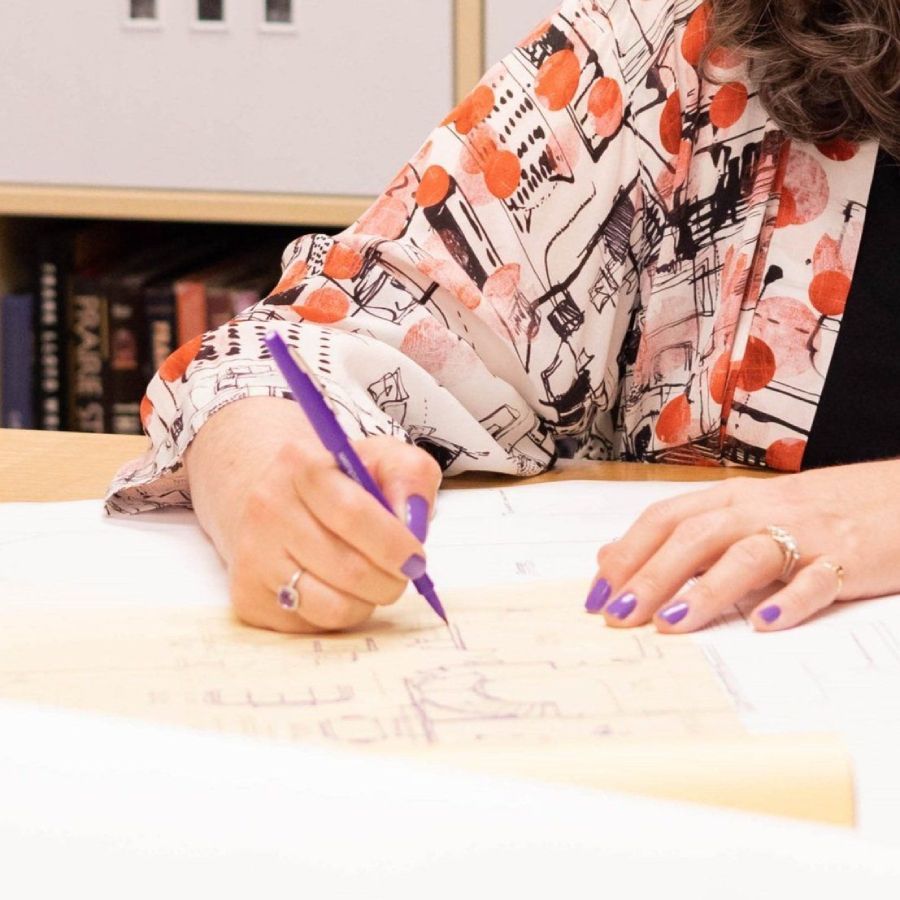
Blending old and new architecture

How to match styles for a home remodel that feels seamless
Remodeling your home should feel exciting and not like you’re taking a gamble with its character.
But too often, homeowners worry that a much-needed addition or update will stick out rather than blend in. Maybe it’s a mismatched roofline. Maybe it’s siding that feels off. Or maybe it’s that gut feeling when something just doesn’t look right.
We hear this all the time from clients who love their homes but are nervous about what comes next. They don’t want their remodel to look “obvious.” They want it to feel seamless—like it’s always been there.
That’s where thoughtful architectural design makes all the difference.
“The biggest compliment I get is when someone says they can’t tell where the addition starts — that’s when I know we did our job right.”
– Dawn Zuber, architect and founder of Studio Z Architecture
At Studio Z, we believe that matching styles in a remodel isn’t about copying the past. It’s about honoring the original design while creating something fresh, functional, and cohesive.
Why blending architecture styles matters
Your home tells a story. Whether it was built in the 1920s or the 1990s, it carries architectural cues that shape how it looks, feels, and functions. A thoughtful remodel respects that story, especially when working with homes that feature historic architecture.
Many of our clients come to us specifically because they love their home’s character and want any changes to feel intentional—not tacked on.
They don’t want a disjointed addition that sticks out like a sore thumb. They want something that looks like it’s always been there.
“If someone wants an addition that stands out in a flashy, disconnected way, we’re probably not the right fit. Our focus is on harmony and continuity.”
– Dawn Zuber, architect and founder of Studio Z Architecture
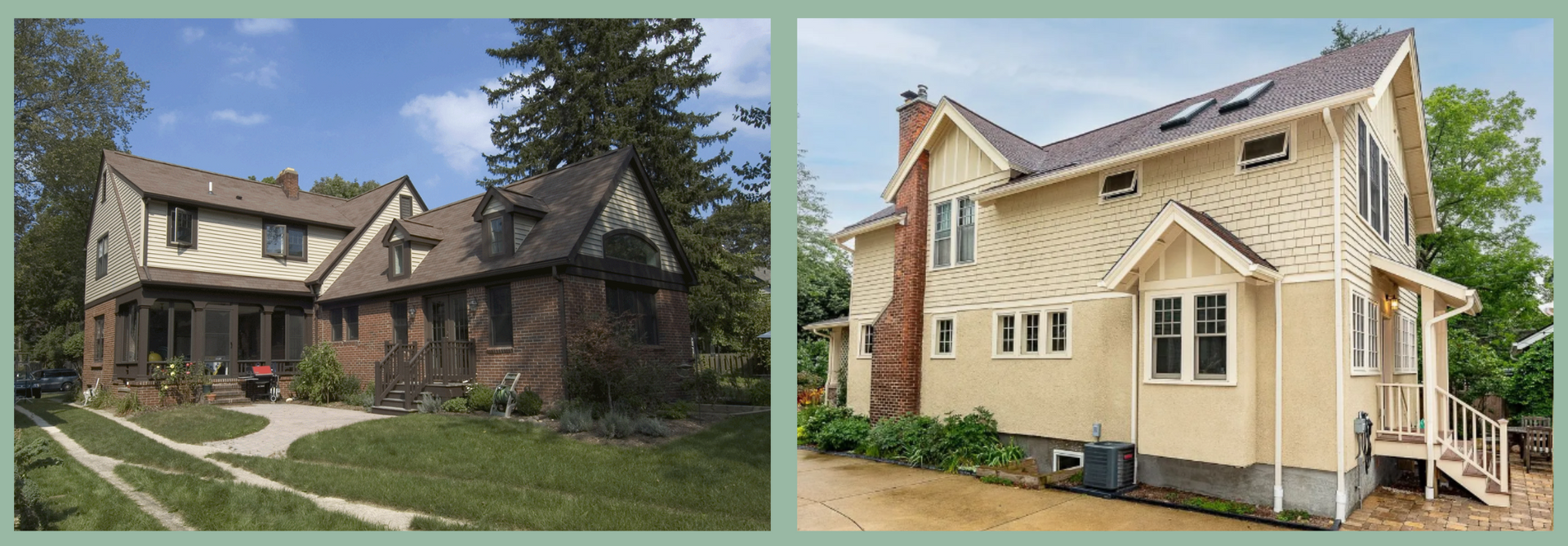
Preserving architectural character isn’t just about aesthetics. It can also protect and even increase home value.
And it’s not just older generations who care. A recent survey found that 97% of millennials value historic preservation, showing a strong preference for neighborhoods with authentic, historic character.
Techniques for seamless integration of the new with the old
So how do you actually make a new addition feel like it’s always been there? It comes down to careful observation, thoughtful design, and respect for the home’s original details.
Here’s how we approach it at Studio Z.
1. Study and mirror the original design
Before we even begin designing, we take time to carefully analyze what makes the home distinct.
That might be the width of the siding, the shape of the eaves, the pitch of the roof, or the way trim is layered around the windows. These elements aren’t just aesthetic details—they define the home’s character.
“We take time to understand what gives a home its character — the trim, the rooflines, the siding — and we echo those elements so the new work feels like it’s always been there.”
– Dawn Zuber, architect and founder of Studio Z Architecture
By mirroring these details, the new structure integrates naturally with the old — creating continuity rather than competition.
2. Balance between old and new
Matching doesn’t mean you’re locked into the past. Sometimes, clients want to incorporate more contemporary architecture into an older home.
When done thoughtfully, these elements can enhance functionality and introduce a fresh perspective while still aligning with the original structure.
This can mean bringing the original home up to date so it aligns with the addition, or selectively introducing modern touches in a way that still respects the overall aesthetic.
“You can absolutely modernize — but you still need to respect the existing architecture. Either the new matches the old, or the old gets a thoughtful update to match the new.”
– Dawn Zuber, architect and founder of Studio Z Architecture
3. Material and color selection
Even small choices in materials can make a big difference in how unified a remodel feels.
We look closely at textures, siding exposure, window styles, and roofing materials to ensure consistency. When using newer materials, we seek options that mimic or complement traditional ones—offering the benefits of modern technology without sacrificing authenticity.
Color also plays a crucial role. Selecting a palette that reflects the home’s era and architectural style helps tie everything together, inside and out.
We work hard to ensure that the finished project feels timeless, not trendy.

Common mistakes homeowners make
Even with the best intentions, it’s easy to overlook the subtle details that make a remodel feel cohesive.
Here are a few of the most common pitfalls we see and how to avoid them.
1. Ignoring the details
It’s easy to get caught up in big-picture decisions like square footage or layout and miss the smaller details that truly define a home’s character.
Roof pitch, trim width, siding exposure, window proportions—these may seem minor, but they’re the visual glue that holds a home’s style together.
Overlooking these elements can make even a well-built addition feel out of place. For example, a roof with a shallower or steeper pitch than the original can throw off the balance of the entire elevation.
When those mismatches stack up, the result is a remodel that feels disjointed rather than deliberate.
2. Disproportionate elements
Sometimes the issue isn’t what gets added—it’s how.
One of the most common mistakes we see is using features that are the wrong scale for the original home. A narrow column on a Craftsman-style porch or oversized windows on a modest bungalow can unintentionally undermine the home’s authenticity.
“It’s not just about materials — it’s about proportions. Skinny porch columns on a traditional home can throw everything off visually, even if people can’t articulate why.”
– Dawn Zuber, architect and founder of Studio Z Architecture
Getting scale and proportion right requires a trained eye. These are the kinds of decisions that can elevate a remodel from "acceptable" to "architecturally seamless."
3. Lack of architectural guidance
DIY renovations and contractor-led designs often skip the design process altogether or rely too heavily on Pinterest trends without thinking about how they’ll fit into the existing structure.
Without a strong architectural vision, it’s easy to make choices that clash with the home’s style or layout. Whether you’re looking to renovate a single room or add a full wing, working with an architect ensures your updates feel cohesive and intentional.
A good architect doesn’t just design new spaces; they make sure those spaces belong, aesthetically, structurally, and historically, to the home they’re part of.
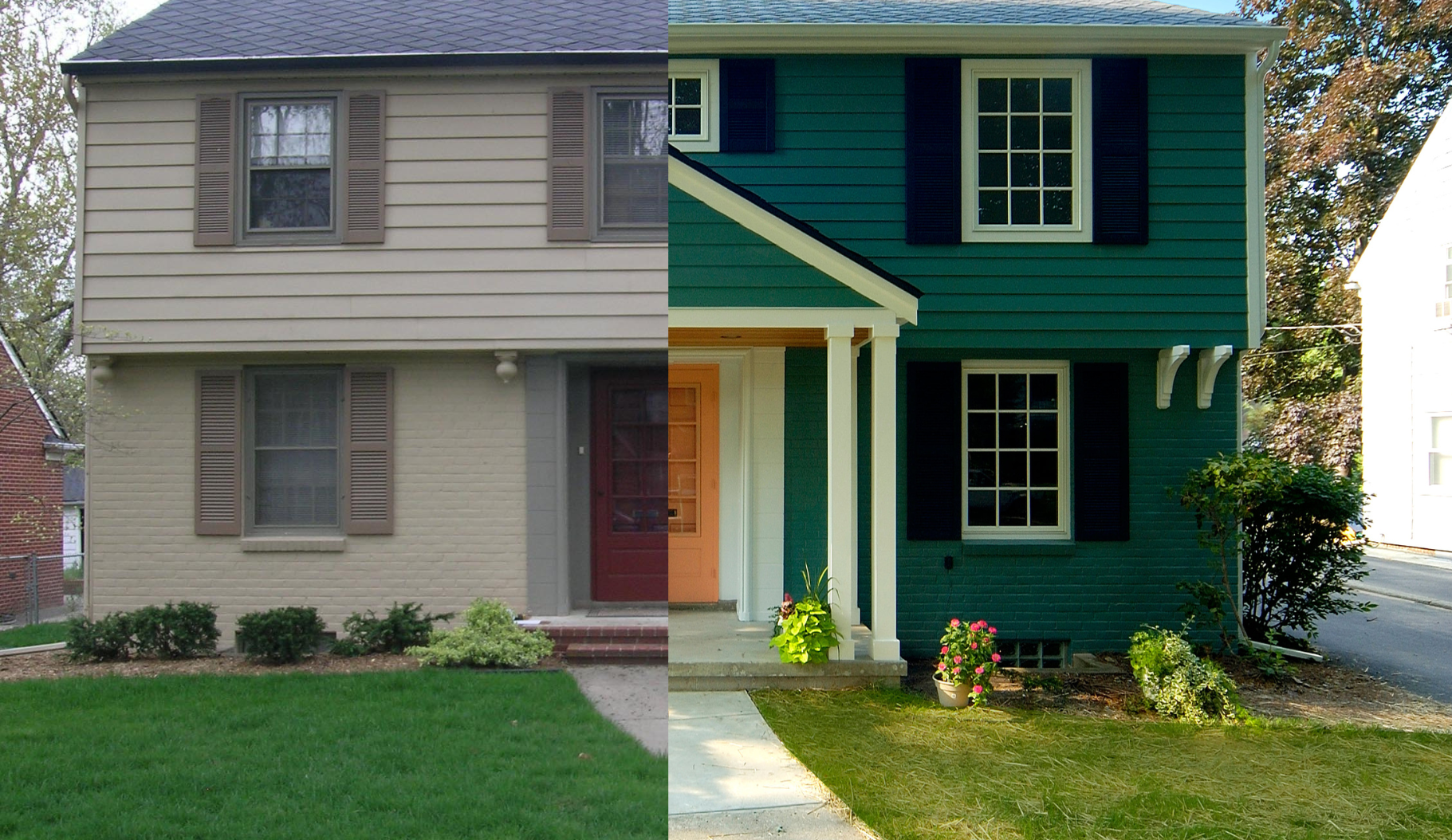
The role of an architect in matching style
A remodel is more than a construction project, it’s a design dialogue. And your architect is more than someone who draws up plans.
At Studio Z, we see ourselves as interpreters of your home’s story. We listen carefully to what your house is saying—and what you want it to say—and translate that into a design that feels authentic, cohesive, and uniquely yours.
Matching architectural styles isn’t just about replicating details. It’s about understanding what makes your home feel the way it does, and designing new spaces that align with that spirit.
Architecture doesn’t just shape how a home feels. It shapes how others perceive it, including potential buyers. One study even found that architectural variables significantly impact home values, reinforcing the importance of thoughtful, cohesive design decisions — especially when blending old and new.
An experienced architect knows how to blend old and new in a way that maintains architectural integrity while reflecting your lifestyle and goals.
We also help homeowners navigate the flood of inspiration that’s out there, from Pinterest boards to Houzz galleries to design magazines. Those platforms are fantastic for ideas, but without context, they can lead to mismatched choices that don’t quite fit your home’s bones.
“A good architect will help you see the difference between inspiration and appropriation — Pinterest is great for ideas, but your home deserves something that truly fits.”
– Dawn Zuber, architect and founder of Studio Z Architecture
At the end of the day, a remodel should feel intentional and personal—not trendy or forced. That’s the value of working with an architect who understands both design principles and the emotional connection you have to your home.
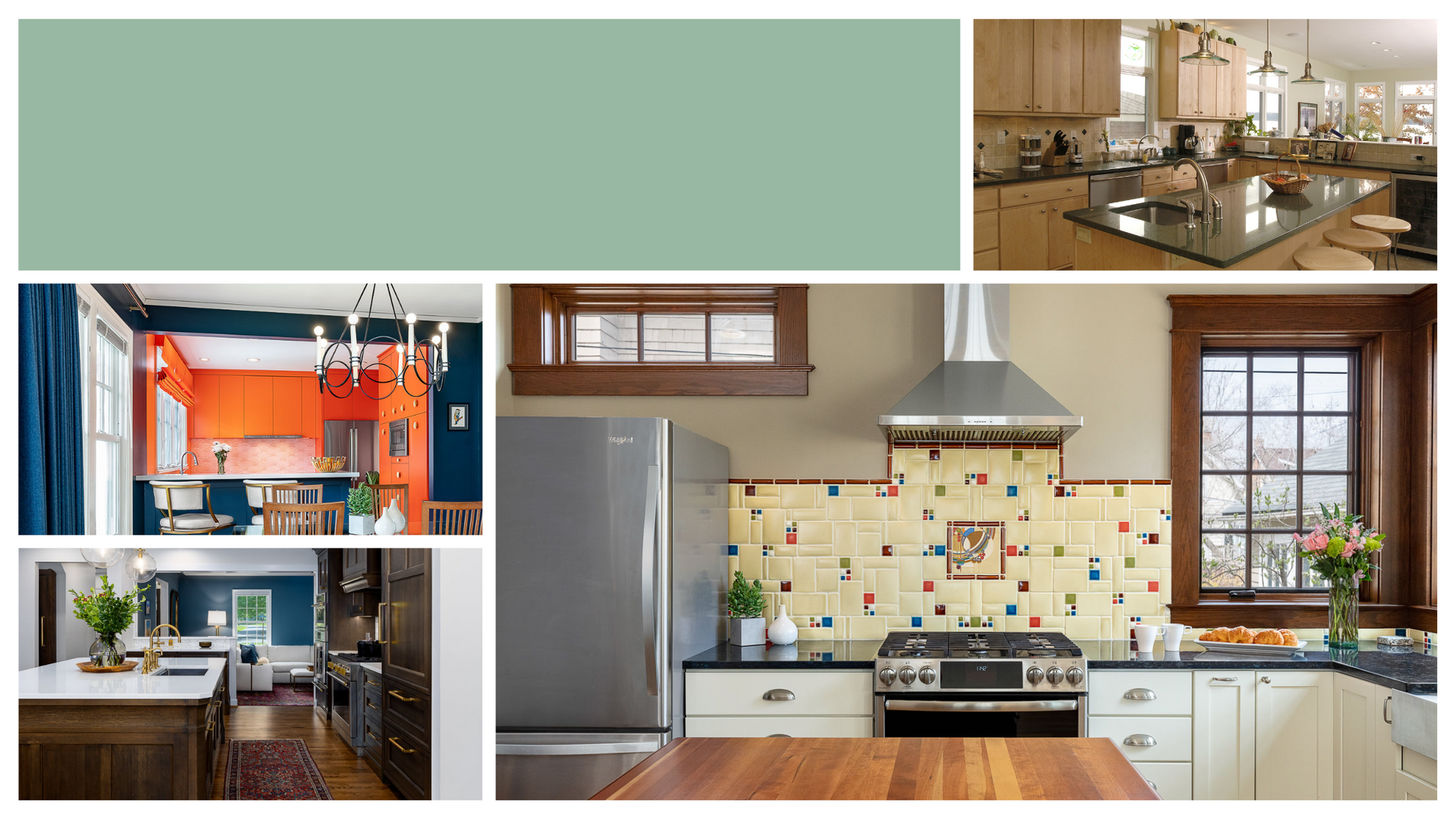
Real-world examples from Studio Z
These remodels highlight what happens when style matching is done well. Where additions and updates feel like a natural extension of the home, rather than an afterthought.
At Studio Z, we approach each project as a collaboration between the past and present, carefully tailoring solutions to both the architecture and the homeowner’s lifestyle.
Here are four real-world examples that show how we’ve helped clients achieve additions that feel just right.
Ann Arbor Craftsman Renovation
This is a client favorite—and one of ours, too. The home is a classic Craftsman with rich character and strong architectural language.
Our challenge? Add space and functionality without compromising its cohesive feel.
We studied the original design carefully, replicating everything from the roof pitch and siding width to the window trim and detailing.
The result is an addition so seamless, guests often don’t realize it’s not part of the original structure. We often show
this project when we present our proposals to illustrate what’s possible when additions are truly integrated with care and intention.
❛❛
Having fallen in love with our house for its original craftsman-style charm and abundant natural light, we wanted our new addition to preserve those elements, while creating a contemporary feel and expanding the kitchen and bathroom spaces. True to their reputation for excelling at such projects, Studio Z came up with an award-winning design that fully embodied the aesthetic and function we envisioned.
• Ann Arbor Homeowners
Wright-Inspired Ranch
This mid-century home came with strong stylistic bones inspired by Frank Lloyd Wright. But also had a few quirky updates over the years that didn’t quite fit, including an outdated bathroom we lovingly referred to as the “Austin Powers bathroom.”
Our goal was to honor the original spirit of the home while correcting those mismatches.
We focused on echoing the horizontal lines, material palette, and craftsmanship that defined the original style. While we didn’t replicate everything exactly, we were intentional about the elements we carried forward, especially in the porch addition, which now feels like it’s always been part of the design.
The result is a comfortable, cohesive space that reflects the home's history, with a modernized, thoughtful twist.
The Big 10 House
This home had undergone a remodel in the 1950s that stripped away much of its original character.
The client reached out to us for a practical update — the carport was deteriorating — but also wanted help bringing back the historic charm that had been lost over time.
We redesigned the carport to better match the home's proportions and helped the owners reimagine the exterior to align with its Victorian-era roots.
Working closely with an interior designer, we selected a color palette that complemented the architecture while avoiding the overly bold hues the family’s college-age son had originally proposed.
The result was a home that felt vibrant, personal, and architecturally grounded — a major visual transformation that still felt true to the neighborhood.
Ann Arbor Hills Remodel
This home was a great candidate for a vertical addition, but only if it could be done with precision and restraint. Every detail, from the trim to the windows to the siding, needed to match the existing structure to maintain its character and scale.
We took a detail-oriented approach, carefully replicating the architectural elements so the new portion of the home would feel original.
The result was so cohesive,
the project was featured on the cover of a local Remodelers Council Guide. Inside and out, the home feels balanced and complete, with added functionality that blends effortlessly with the existing layout and style.
When is it okay to modernize?
Not every remodel needs to be a historical reenactment. Updating is absolutely okay — in fact, it’s often necessary for function, comfort, and energy efficiency.
When modern architecture is introduced with care, it can complement and elevate a traditional home beautifully.
The key is intentionality. A well-executed contemporary addition can offer modern amenities and updated aesthetics while still respecting the home's historical charm.
What works:
- Modern windows that echo original proportions
- Updated materials that mimic traditional finishes
- Contemporary interiors within period-appropriate shells
What doesn’t:
- High-contrast additions that ignore scale
- Mismatched materials that feel jarring
- Unconsidered changes that diminish the home’s charm
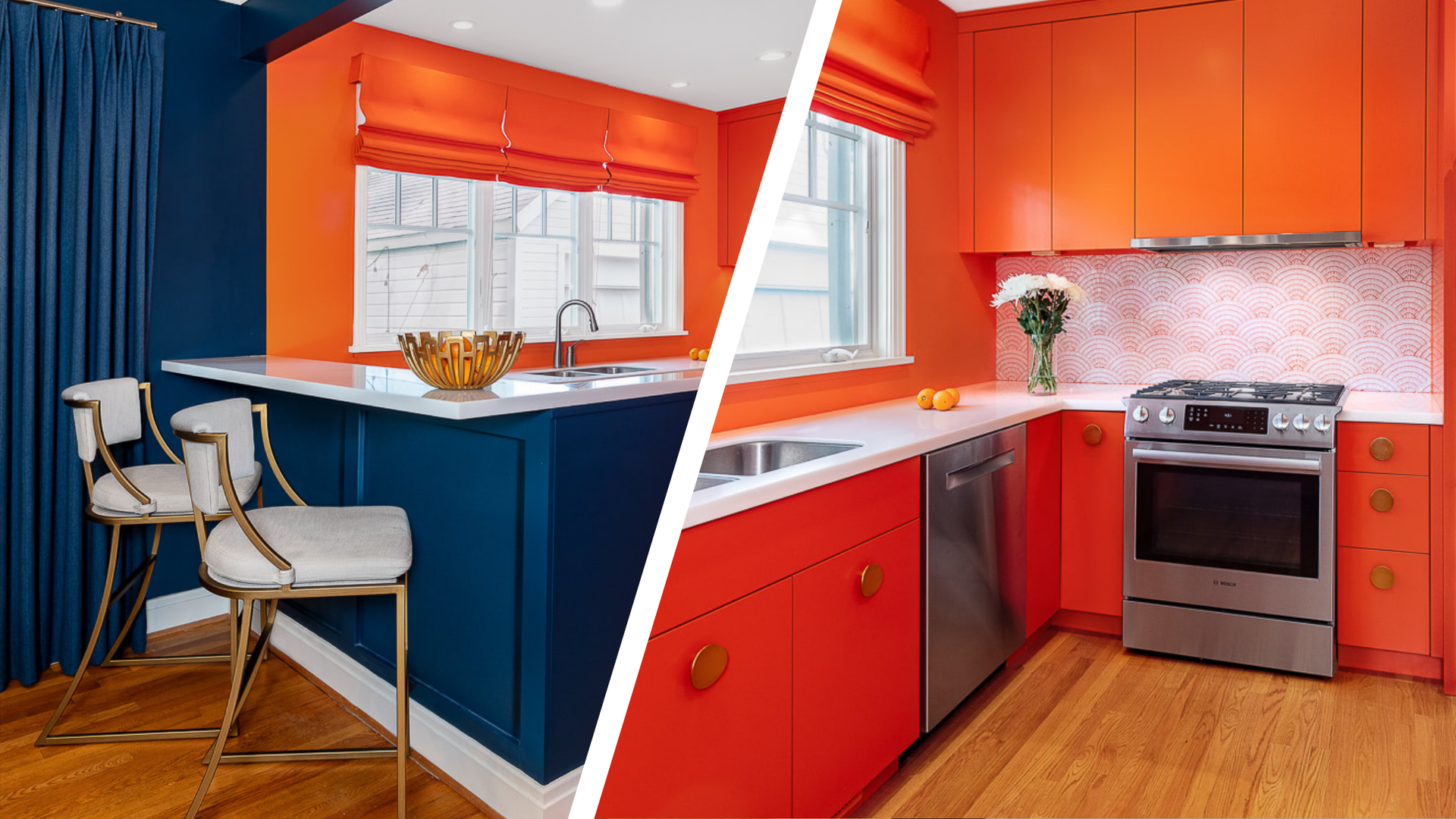
Remodels that respect the past and embrace the future
At Studio Z, we believe the best remodels are rooted in respect—for the home, for the client’s vision, and for good design.
When you match styles well, you’re not just preserving a look; you’re honoring a legacy while shaping a future. A remodel should feel like a natural continuation of your home’s story, not a rewrite.
That’s the Studio Z difference: thoughtful, collaborative, and always centered on what makes your home yours.
Thinking about a remodel?
Let’s create something beautiful together—something that feels like it’s always been a part of your home.
Contact us today!
FAQ: Blending Old and New in Home Remodels
Q: Does a new addition always have to match the original style of the home?
Not necessarily, but it does need to feel cohesive. At Studio Z, we believe the best results come from either matching the original style or updating both the existing and new elements so they work together harmoniously. The goal is a seamless transition, not a jarring contrast.
Q: Can I incorporate modern features into a historic home?
Absolutely. Many of our clients want the charm of their historic architecture and the conveniences of modern living. We carefully integrate contemporary features—like open layouts, energy-efficient windows, and updated materials—without compromising the home's original character.
Q: Will preserving my home’s architectural style affect its resale value?
Yes—in a good way. Studies show that homes with architectural integrity and historic details often command higher prices in the real estate market. Buyers are drawn to homes that feel authentic and thoughtfully designed.
Q: I love ideas from Pinterest. Can you still help me design something unique to my home?
Of course! We welcome inspiration boards and reference images—they’re a great way to understand your style. Our role is to interpret those ideas and adapt them so they complement your home’s architecture and your lifestyle.
Q: What’s the first step if I want to remodel in a way that blends old and new?
Start by talking to us. We’ll help you define your goals, evaluate the existing architecture, and develop a design that balances form, function, and authenticity. If you’re ready, contact us today to start the conversation.

